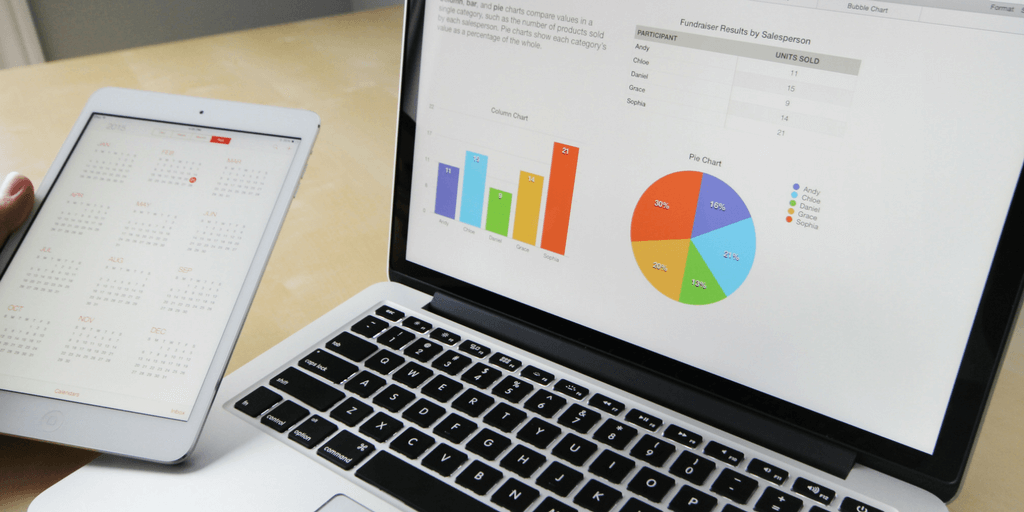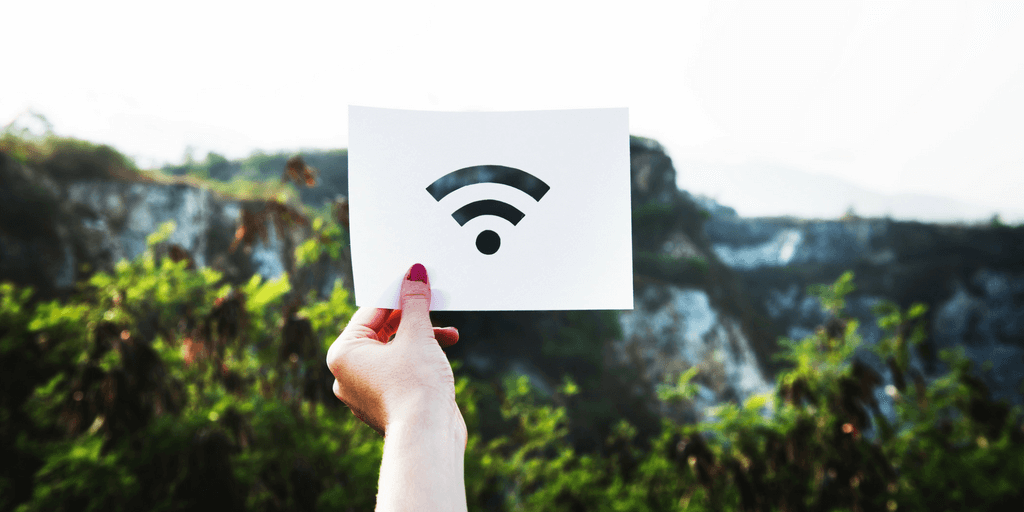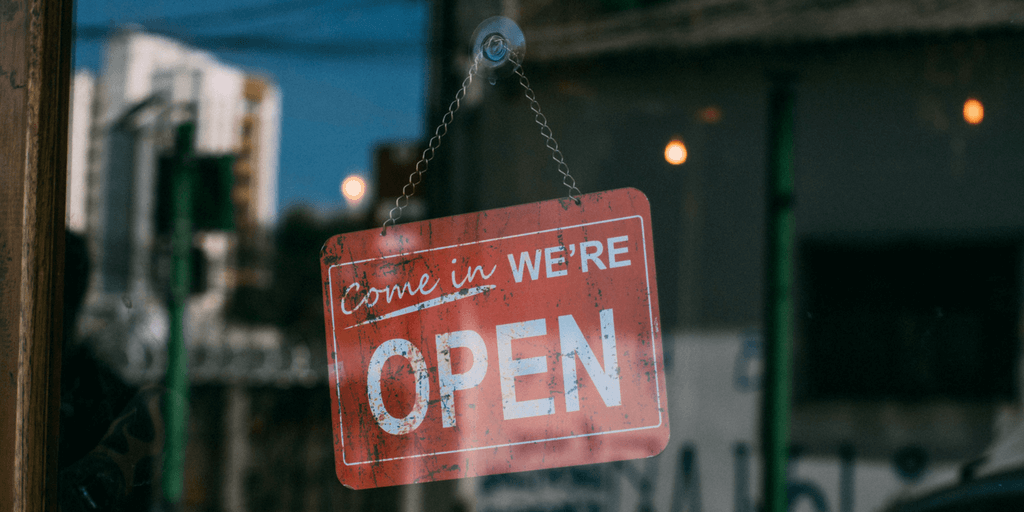Footfall measures the number of people who enter a shop or business in a particular period of time.[5]Despite one-click shopping, 90 percent of all retail sales are still transacted in stores. That means plenty of feet are trekking to retail outlets to make purchases.
This might sound odd, but understanding those feet is key to improving customer service and, in turn, your business.
How do we do that? By gathering data and conducting a footfall analysis.
What is Footfall Analytics?

Footfall analytics is a fancy way of counting people who visit your store. The traditional way is to have an employee at the door as a footfall counter, clicking an old-fashioned customer counter.
Footfall analytics, however, relies on the latest technologies to count and track customers. In other words, a footfall analysis counts feet; it’s counting people.
Sounds simple, right?
You may ask, “Why bother? Why should I have a footfall counter?”
Well, retail footfall counters don’t just tell businesses how many people walk by their store and how many enter.
They also provide insight into what customers browse, how they browse, customer psychology, whether they walk out frustrated — and everything else that can be determined by counting people.
Footfall analytics is collected data that can be used to create a great customer experience.
Let’s use a real-world example to illustrate this.
The Kamppi Shopping Centre in Helsinki Finland is one of Europe’s largest malls, with over 100,000 people scouring its winding hallways every day. Before employing a footfall counter, mall manager Heli Vainio — and the mall’s marketing division — assumed that most customers shopped in the evening.
Makes sense. People are off from work in the evening so they stop to shop in-between their commute home. But our intuitions often lead us astray.
Once the Kamppi Shopping Centre set up people counter sensors and began collecting and analyzing footfall data, they discovered that most customers were actually shopping on their lunch break.
The results surprised the team but they were able to use the data to reorganize their approach to improve their retail customer experience:
“With customer analytics like this, we understand customer behavior with much higher granularity and are able to improve our decision-making regarding marketing, layouts, tenant locations, and much more.”
Instead of expending most of their resources in the evenings to meet customer’s needs, Vaino and his team reorganized their strategy to meet the needs of customers at lunch.
They were able to deliver excellent customer experience thanks to footfall analysis.
How Do you Gather Footfall Data?
How did the Kamppi Shopping Centre gather footfall data? Well, it’s more obvious than you might think.
WiFi & Bluetooth Footfall Devices

Smartphones are key to collecting footfall data. They act as a people-counting system.
WiFi and Bluetooth-enabled smartphones emit a ping as they search for a router or device to connect to. Footfall analysis counts and tracks those pings to tell businesses where they’re coming from to their store.
The data is completely anonymous so there’s no fear of violating customer’s privacy.
Not only does collecting smartphone data act as a people counting system and display footsteps, footfall data gives a detailed layout of store traffic. This helps you build an image of what your customers look like and how they shop.
For example, there is an apocryphal story in the data-mining community concerning Wal-Mart. Harvesting their footfall data, Wal-Mart discovered that young American men who bought diapers on a Friday were also likely to buy beer.
Diapers and beer. The unholy marriage between these two items would go unnoticed if it wasn’t for footfall analytics.
Then again, what could be done with this information?
Wal-Mart could have moved the diaper display closer to the beer to smooth buyers flow through the store. Perhaps this will incentivize customers who show up to buy diapers to buy beer as well, once they spot a cold refrigerator within their peripheral vision.
Even placing them closer together in a product list might generate some positive results.
A campaign in the spirit of “Buy a pack of diapers, get 10% off your next purchase of beer” may sound wacky — but hey, you should never ignore the possibility.
While this potential Wal-Mart promotion never emerged, businesses can adopt similar measures when they discover correlations.
The point being, you need to make the most out of data. When used properly, footfall data informs businesses how to improve the retail customer experience.
People Counting Sensors at Entrances

Footfall counters for retail don’t just use smartphones. Some stores employ a people counter sensor above their entrance to track the number of customers entering the store and passing by.
Sensors draw a far more accurate picture of overall store traffic since they don’t rely on customers who forgot to turn off their WiFi and Bluetooth signal.
Though sensors typically don’t track customer flow through a store, they do provide valuable footfall data.
So, what can we learn from footfall sensors?
A people counting system using sensors lets businesses know when a potential customer was close to using a service but decided to decline.
(This is called a reneging customer behavior.)
People counters may even tell you when a customer was close to entering your location but then reconsidered. Maybe the storefront wasn’t attractive enough for them?
Storefronts set the tone of a customer’s shopping experience, and footfall data helps businesses tweak their appearance to suit their customer’s expectations.
Footfall analytics also lets businesses know when customers leave a store without making a purchase.
At some electronic stores like Microcenter, customers expect assistance from employees. But if there aren’t enough employees at peak hours, customers stomp out the door.
A retail store traffic counter tells managers their peak hours so they can schedule the appropriate staff to meet customer demand. Thus, people counting systems may even prevent poor customer service from affecting your sales.
Engagement

No long-term relationship ever feels complete without engagement — and customer-business relationship is no exception.
Ultimately, footfall analysis is about using data to improve customer engagement. The data is akin to having a conversation with your customers about their shopping habits.
Albeit, since it’s impossible for a mall to gather feedback from all visitors, footfall data talks for the customers. Knowing your customers better means being better able to cater to their interests.
Let’s imagine your store is launching a new line of personalized selfie sticks. Well, when do you want to launch your promotional campaign?
Do you want to pour resources into promoting the “Fab-Selfie-Stick” at lunch, when customer counters tell you your primary demographic is people between the ages of 30 and 55?
Selfies are primarily taken by millennial customers between the ages of 18 to 29, and our footfall data shows that this group makes up the majority of weekend visitors. Therefore, it makes far more sense to run the campaign on Saturday, then say Wednesday at 1:30 PM.
Footfall data provides points of information telling businesses when to market products, whether that be to cater to a demographic or perhaps to capture the most number of eyes at peak traffic hours.
Footfall analytics can’t tell businesses how exactly to conduct themselves. But people counter sensors and footfall traffic data does provide ample information for guiding decisions.
That information can be used to greatly improve the retail customer experience. Because by improving the lives of customers, businesses improve themselves.
Qminder is a customer management system that swears by these words. Where others may promise business success at the expense of customers, we understand the intrinsic mutual link between a customer and a business.
Footfall analytics is a major part of Qminder’s service, and it has already helped many businesses grow and expand using numbers that are backed up by real-time statistics.
Join the ever-growing family of Qminder users and make the most out of a 14-day free trial.
No comments:
Post a Comment